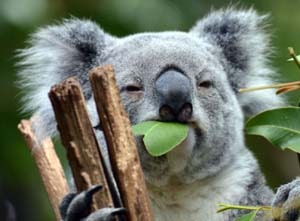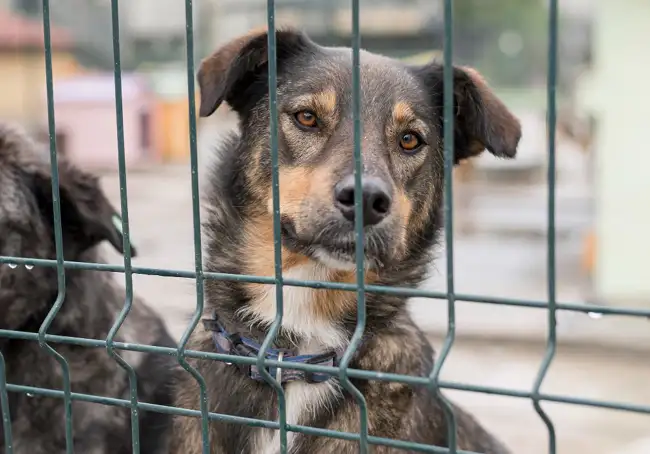English documentary on Koalas with transcript and illustrated flashcards to improve your reading and vocabulary, and an embedded video podcast to improve your listening comprehension
Source of documentary: National Geographic YouTube Channel
Koalas
With fluffy ears, round heads and spoon-shaped noses, koalas are known for their lovable faces. But these sleepy, Australian tree dwellers are full of surprises.
Marsupials
Koalas are not bears, they’re marsupials. Often mislabeled koala bears, because of their teddy bear-like appearance, koalas are marsupials: mammals that give birth to undeveloped young. Like most marsupials, mother koalas have pouches, where baby koalas or joeys drink their mother’s milk and continue to develop for around six months. But unlike most other marsupials, koala pouches open toward the bottom. This allows joeys to access and consume a substance their mother secretes, which aids in the baby koala’s digestion.
Unique paw design
Koalas have six opposable thumbs. With sharp pointed claws and rough pads, koala hands and feet are uniquely designed to grip branches. Their front paws have five digits. Two digits oppose the other three, like a pair of thumbs. Their back paws each have one large clawless opposable digit, which allows them to grasp branches with their feet, freeing their hands to forage. Koala feet also have built-in combs. The second and third toes are fused together and are used for grooming their wooly fur.
Koala diet
Koalas eat leaves that are poisonous to many animals. The koala diet consists almost entirely of eucalyptus leaves. Of the roughly 650 species of eucalypt trees in Australia, koalas prefer only about 30 of them. The leathery leaves are very high in fiber and contain chemicals toxic to other animals. To process this specialized diet, koalas have a close ended digest organ called a caecum, which helps digest the leaf fibers via fermentation.
Sleepy heads
Koalas sleep up to 22 hours per day. Because of their low nutrition diets and sluggish metabolism, koalas must conserve their energy. Koalas spend about 10% of their day eating and around 90% of their time sleeping. To accommodate so much time spent sleeping in tree branches, koalas have curved spines and tailless rears, padded with cartilage and extra thick fur.
Loss of habitat threatens koalas
Koala habitat is quickly disappearing. Koalas only live in eastern and southeastern Australia, and once numbered in the millions. Now, wild koala population estimates vary from 43,000 to around 350,000. Vast tree clearing due to urbanization along with droughts and forest fires, have drastically reduced koala habitats since the early 1900s. These stressors have made koalas vulnerable to diseases, as well as dog attacks and vehicle strikes.
Australia’s conservation plans include designating and protecting koala habitat, and funding koala hospitals and disease research. These combined efforts are critical to protect the beloved koala from extinction.




This creatures are so cute and fluffy I want to have one of them.
As you said indirectly, koalas are pretty adorable. Yet, I’m afraid you cannot keep them as pets because they strictly rely on their natural habitat, which is southern and southeastern Australia.
There is no wonder for me why this creature is so beloved because they are so cute and fluffy. Also, it was a new fact for me that koalas eat poisonous leaves.
These adorable creatures are highly vulnerable as they are almost defenseless and their natural habitat in Australia is being destroyed by human activities.
Koalas
With fluffy ears, round heads and spoon-shaped noses, koalas are known for their lovable faces. But these sleepy, Australian tree dwellers are full of surprises.
Marsupials
Koalas are not bears, they’re marsupials. Often mislabeled koala bears, because of their teddy bear-like appearance, koalas are marsupials: mammals that give birth to undeveloped young. Like most marsupials, mother koalas have pouches, where baby koalas or joeys drink their mother’s milk and continue to develop for around six months. But unlike most other marsupials, koala pouches open toward the bottom. This allows joeys to access and consume a substance their mother secretes, which aids in the baby koala’s digestion.
Unique paw design
Koalas have six opposable thumbs. With sharp pointed claws and rough pads, koala hands and feet are uniquely designed to grip branches. Their front paws have five digits. Two digits oppose the other three, like a pair of thumbs. Their back paws each have one large clawless opposable digit, which allows them to grasp branches with their feet, freeing their hands to forage. Koala feet also have built-in combs. The second and third toes are fused together and are used for grooming their wooly fur.
Koala diet
Koalas eat leaves that are poisonous to many animals. The koala diet consists almost entirely of eucalyptus leaves. Of the roughly 650 species of eucalypt trees in Australia, koalas prefer only about 30 of them. The leathery leaves are very high in fiber and contain chemicals toxic to other animals. To process this specialized diet, koalas have a close ended digest organ called a caecum, which helps digest the leaf fibers via fermentation.
Sleepy heads
Koalas sleep up to 22 hours per day. Because of their low nutrition diets and sluggish metabolism, koalas must conserve their energy. Koalas spend about 10% of their day eating and around 90% of their time sleeping. To accommodate so much time spent sleeping in tree branches, koalas have curved spines and tailless rears, padded with cartilage and extra thick fur.
Loss of habitat threatens koalas
Koala habitat is quickly disappearing. Koalas only live in eastern and southeastern Australia, and once numbered in the millions. Now, wild koala population estimates vary from 43,000 to around 350,000. Vast tree clearing due to urbanization along with droughts and forest fires, have drastically reduced koala habitats since the early 1900s. These stressors have made koalas vulnerable to diseases, as well as dog attacks and vehicle strikes.
Australia’s conservation plans include designating and protecting koala habitat, and funding koala hospitals and disease research. These combined efforts are critical to protect the beloved koala from extinction.
Thank you so much indeed for your flawless task!